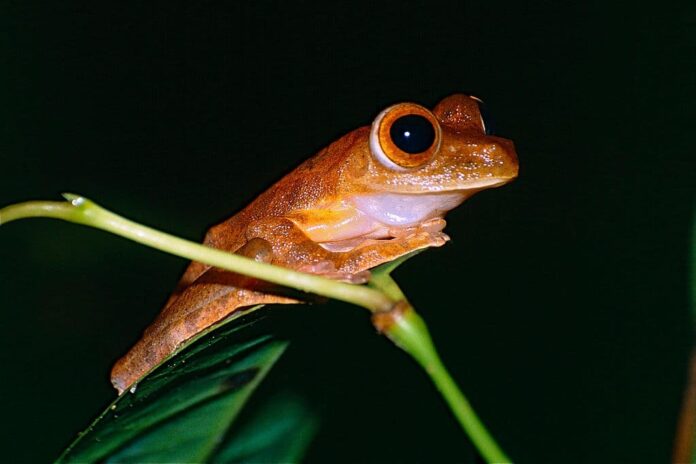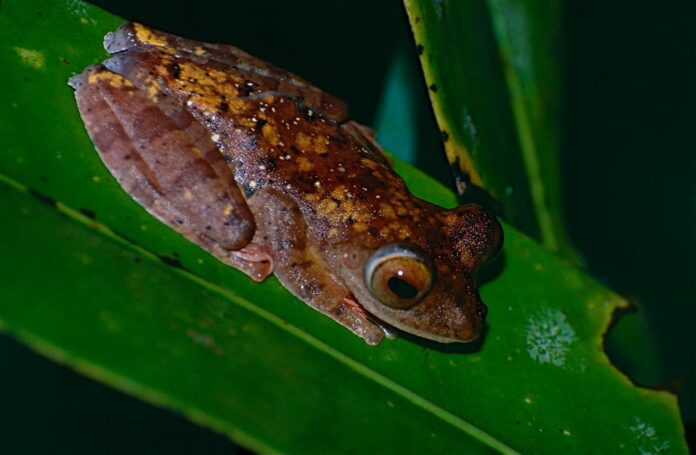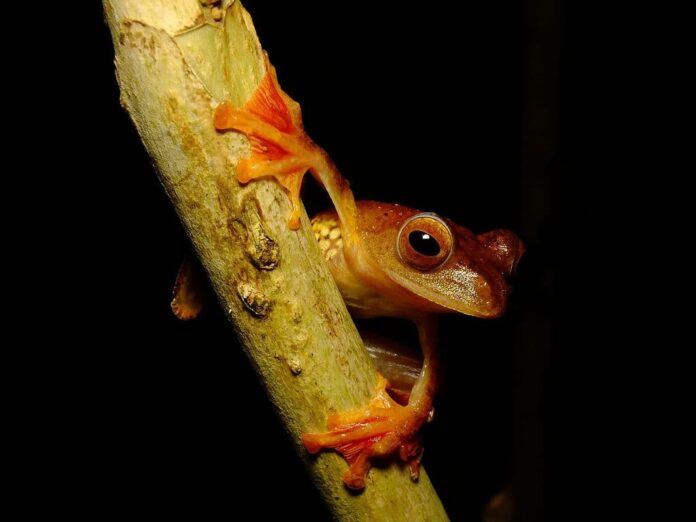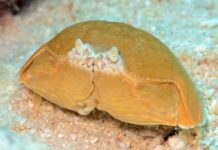By the look, you can already tell the distinctive characteristics of the harlequin tree frog. This special feature allows this amphibian an awesome ability that is unique to its species. There are many flying frog species but I chose to talk about this one because of its beautiful appearance. You have never heard or seen of a flying frog? Today is the day to learn several things about them, let’s see which part you find the most interesting.
1Appearance

A harlequin tree frog has a mottled medium brown dorsal surface and leg upper parts with black-spotted yellow flanks. The underpart of the frog is pale pink while the webbing between their fingers and toes is red. It has a round and short snout, and its large eyes have an orange or yellowish iris.
The harlequin tree frog is one of the frog species that has evolved to have extensive webbing between fingers and toes. This unique feature allows it to glide from branch to branch and across breaks in the canopy. Each glide can be up to several meters through the air which is a lot for a small frog. And this is also how it goes from one place to another without having to face predators on the forest floor. It also has oversized toe pads that offer a soft landing and a convenient grasp on tree trunks.
2Feeding & Habitats

The harlequin tree frogs are residents of a few Southeast Asian countries including Brunei, Indonesia, Malaysia, Thailand, and the Philippines. They habit freshwater marshes, intermittent freshwater marshes, subtropical and tropical moist lowland forests, and subtropical and tropical moist montane forests. Being quite elusive, studying their behavior and feeding is very challenging so we don’t know much about them. But not different from other tree frogs, this one may also primarily feed on insects.
Just like the name suggests, harlequin tree frogs live in canopies of tall trees. They only come down to the ground to breed in suitable pools and streams after building their elaborate foam nests. These natural habitats are being destroyed every day and this is why the main threat to these frogs is habitat loss.
Related Post: Venomous Frogs That Can Kill You




